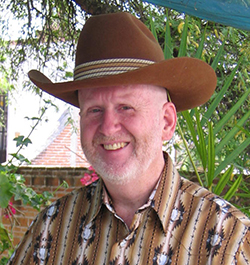That frugal old fellow might well represent the last of a generation that always turned off the lights when they left a room. It is also possible that old man might have known that in the early days of electrification, the late 19th and early 20th century, that practice did not matter much because electricity was not metered.
Lacking a practical or economical way to measure how much electricity each consumer used, the electric companies often just charged a flat rate for unlimited electricity. Of course, back in those days there was actually a practical limit, imposed by the fact there were not many things, other than light bulbs, that you could connect to use electricity.
Soon though, utility companies started to install electric meters and since then we have all been paying for each one of the kilowatt hours of electricity we use. Some consumers, like the old man in the preceding antidote, were aware of the costs and always turned off the light when they left a room.
Two of the foundational components of the information age in which we live in today are the internet and the software we use on it. Similarly to early electrification, both of these originated many decades ago before there was any real prospect of metering how much of these we use, but it is entirely possible this could change in the future.
Software providers are already moving to eliminate the "perpetual licenses" that permitted customers to pay for a software program, then keep and use it for as long as the customer wanted. Today more and more programs are available only as SaaS (Software as a Service) that require paying a monthly charge to continue using.
Microsoft must hate that having paid them several hundred dollars for a program two decades ago, I still use that program today. It is great software, now bug free, and it just works. Microsoft regularly urges that I should sign up for a new version; only $12 per month, every month for the rest of my life.
With regard to the internet, from time to time on the tech-oriented web sites I follow I will read hints that some Internet Service Providers (ISPs) regret that they ever got started offering unlimited internet access for a set price. Decades ago there might not have been an economical or practical way to meter how much bandwidth individual customers were using, but advances in technology have made this possible today. Apparently the ISPs would like to be able to move to a pay-as-you-go model that would allow them to charge higher prices to heavy users of the internet. No doubt they are eying ways to do this.
Something that is undeniable is that there is a cost involved in moving bits of data across the internet. The electricity needed to do this is not free because there are always costs associated with using fossil fuels or renewables to generate energy. It is possible this is the argument that will be used to justify changing how we all pay for internet access. Our future use of the internet could very well mean that more of us will become aware of what it costs, just like the old man who wondered who forgot to turn off the light in the kitchen.
**************

Charles Miller is a freelance computer consultant with decades of IT experience and a Texan with a lifetime love for Mexico. The opinions expressed are his own. He may be contacted at 415-101-8528 or email FAQ8 (at) SMAguru.com.
**************
*****
Please contribute to Lokkal,
SMA's online collective:
 ***
***
Discover Lokkal:
Watch the two-minute video below.
Then, just below that, scroll down SMA's Community Wall.
Mission

Visit SMA's Social Network
Contact / Contactar

